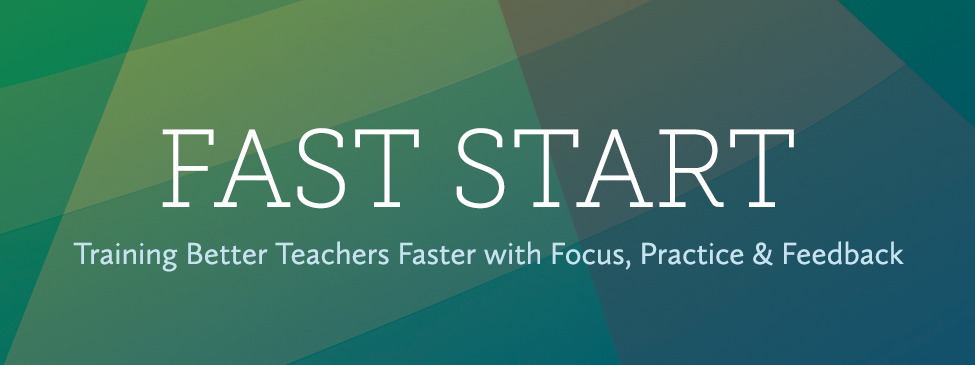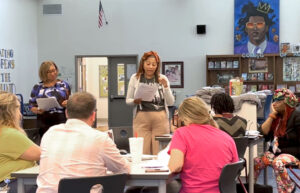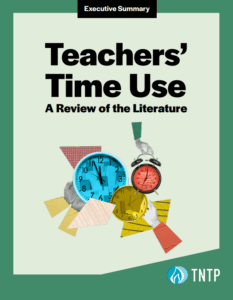Over the last few years, we’ve completely revamped our teacher training programs to spend less time on theory and more time on hands-on practice. Our programs start with an intense, five-week summer training called Fast Start, in which Teaching Fellows spend time practicing and mastering four critical classroom management skills that will help them start off their first year ready for the challenges ahead. Then, throughout the year, we continue their development through active coaching, training and support. To learn more more about how we’ve rebuilt our training program, read our new report, Fast Start: Training Better Teachers Faster, with Focus, Practice and Feedback.
First-year teacher Corrine Handy teaches third grade in Baltimore as a TNTP Teaching Fellow. To explore the training experience from the perspective of a new teacher, we asked Corrine to take us through a typical day in her life during the Fast Start pre-service training.
7:00am: Arrive at school. I teach three hours of summer school each morning, so I arrive at my classroom two hours early to help my co-teacher set up and prepare for the day’s lessons.
8:00am: Morning PD. My placement school provides an extra professional development session for new teachers, focused on behavior management and literacy instruction.
9:00am-12:00pm: Teaching time. I teach kindergarten with a co-teacher, who gives me a lot of freedom to practice different skills. I teach guided reading lessons, whole group lessons and language instruction.
I also practice classroom management skills I learned in pre-service training, like building routines for transitions. My coach observes me, which I love. I’m someone who needs immediate feedback. Each time I get feedback, I feel that I am becoming a stronger teacher and instructor, and my lessons improve.
12:00-1:00pm: Lunch with colleagues.
1:00-2:30pm: Afternoon Training, Part I: Culture Class. We learn behavior management techniques and how to design routines, like the best way to enter the classroom, or how to ensure students transition smoothly between centers and work well with partners.
One of the most important skills is “do not engage.” It’s a way of deflecting the constant questions from students about why they have to do this or that in a certain way. We watch videos of teachers performing the strategy, script our own versions and then practice in drill rounds with our colleagues posing as students. That way, we can practice, get feedback and then practice again, immediately implementing that feedback, over and over again, until we are really nailing it. This is the best part of the training—being able to practice and implement feedback right away.
In the classroom, I can only get to instruction once my class has decent behavior. We have to master that first, which is what the pre-service training is helping us do. On the first day of school, I will know exactly what my entry routine is going to look like!
2:30-6:00pm: Afternoon Training, Part II: Coaching or Literacy Instruction. In coach class, we work with a smaller group of 8-10 people who teach our same age-level or subject. Our coach walks us through different aspects of Common Core standards-based instruction. We get pointers on how to use data to inform our instruction and how to create lesson plans based on the standards.
In literacy instruction class, we learn to view literacy as cross-curricular, no matter what you teach. We watch videos of teachers modeling how to include literacy in all subjects, and then we script lessons—not just literacy lessons, but also science, social studies or math lessons that incorporate literacy.
6:00pm: Head home. At home, I work on my lesson plans for the following week. We have to turn these in and get feedback on them from our coaches.
10:00pm: Get ready to do it all over again. The pre-service training is a really intense time. I had no idea it was going to be so intense, but I’m glad it is because I wouldn’t become a good teacher otherwise.







